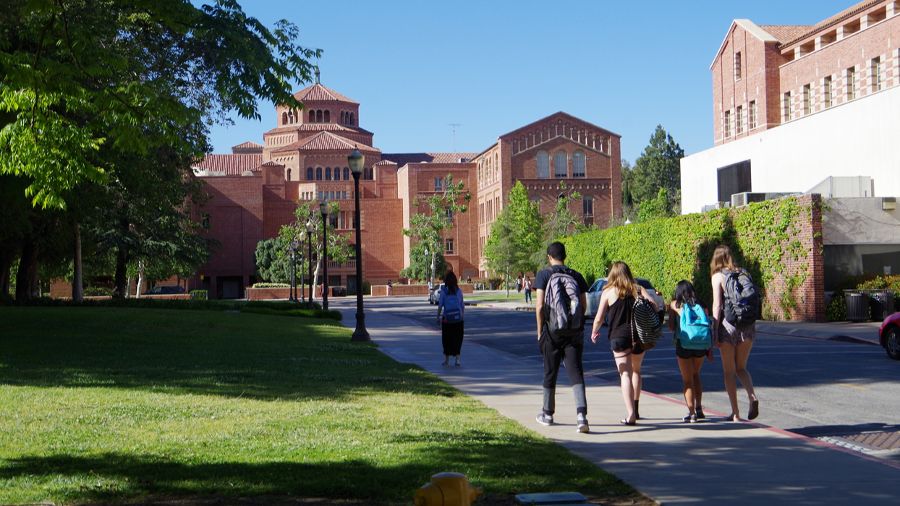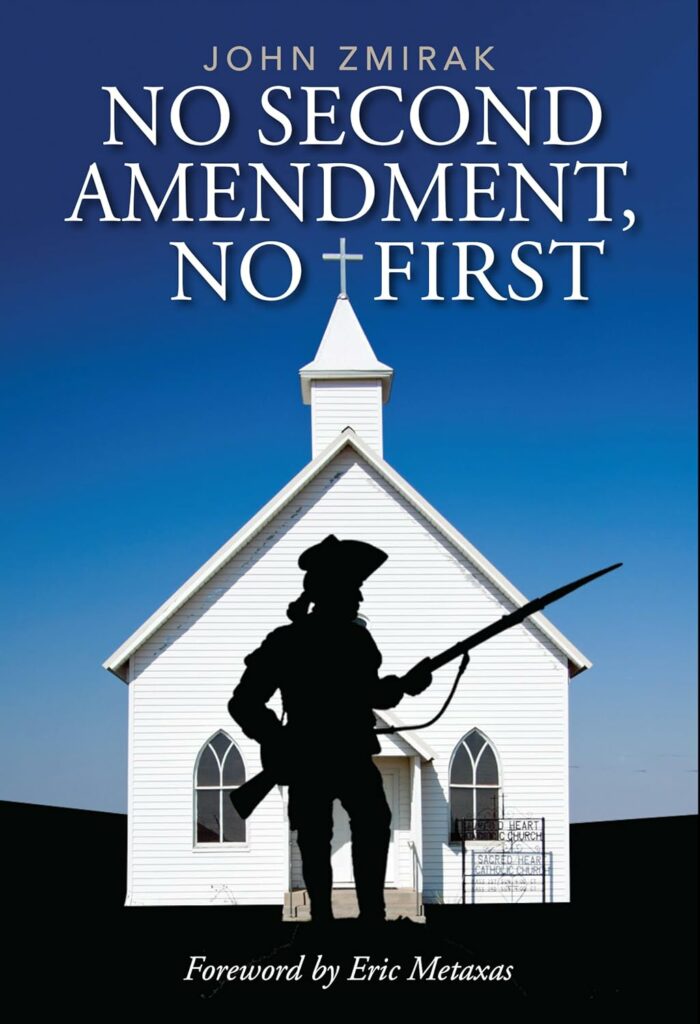Why is the Public Losing Confidence With Higher Ed?

The public has been souring on higher education. That’s what Gallup reported earlier this summer. Take a look:

It’s happening across every major subgroup:

Then there’s the partisan split with regarding to confidence in public schools: 43% of Democrats express a great deal or a fair amount of confidence in public schools. For Republicans, that number drops to just 9%.
What’s going on here? Here to help us cut through the noise is Dr. Scott Yenor. He’s the Washington Fellow of the Claremont Institute’s Center for the American Way of Life. He’s also Professor of Political Science at Boise State University, where he’s entering his 24th year of service.
Alex Chediak: Dr. Yenor, thanks for joining us.
What do you think is behind the declining confidence in higher education? A drop from 57% in 2015 to just 39% in 2023 seems significant. Then again, Gallup reported declining confidence in other institutions as well. Is something unique happening with colleges, or is there some kind of falling tide sinking all ships?
Dr. Yenor: Trust and confidence in American institutions have been sinking steadily since the 1970s. America used to be a high-trust society, one distinguished from the rest of the West. Two great social scientists, Gabriel Almond, and Sidney Verba, published a book in the early 1960s called The Civic Culture. It showed that England and America had uniquely patriotic, high-trust societies.
As the Great Society and mass immigration came to America in the late 1960s, numbers fell across the board for trust and confidence in institutions. Only the police and military (and maybe small businesses) have been relatively immune from corrosive levels of skepticism. Higher education was also, for a long time, in the category of institutions immune from corrosive skepticism. You couldn’t spend a billion dollars on advertising in 2010 or before to get Americans to invest more hope in higher education. It was seen as a coming of age for the upper and middle classes. A ticket to the big time. Even though Americans knew college campuses leaned left, most trusted them for the benefits that they supposedly conferred. In contrast, Americans haven’t trusted Congress or the media for more than a generation.
What’s unique about higher education is its quick movement from a high-trust institution with bipartisan support to a relatively low-trust institution with partisan levels of support. Confidence in higher education is propped up mostly by the confidence that the political Left has in the institutions it controls. An ebbing tide is not lowering all boats equally. Higher education has fallen a lot relative to other institutions.
Is public perception of the unaffordability of college accurate? List prices have risen much faster than inflation for several decades. Then again, discounting among private universities is at an all-time high.
I think the best way to judge the affordability of college is by the debt load of graduates. The sticker price at private colleges and universities has been fake for more than a generation. Less than a quarter of freshmen pay that price at American four-year colleges. Roughly one-third of all undergrads do. Debt loads have nevertheless been going up much faster than inflation. Average student debt is over $30k. Still, I am not sure that unaffordability is the main reason for Americans souring on higher education.
What’s the state of free speech at universities?
Free speech is under assault on most American campuses. The most important way that the lack of free speech manifests itself is in student-to-student interactions, which are squelched when it becomes obvious that there are what I would call regime spies in classes (i.e., students who will “call out” other students to the larger university community). The more prestigious the school, the more this is a problem.
But I am not so sure that this is the problem conservatives think it is. Even if people were free to speak, the monoculture would be a problem. What is being taught on universities does not cultivate a well-educated, well-rounded citizen. That is the chief threat universities pose to the country at large. It’s why citizens should be concerned about the direction of higher education.
Is wokeness to blame for declining public confidence? Let’s define “woke” as going along with the progressive vision of race, gender, and sexuality.
I think “wokeness” contributes to the conservative dissatisfaction with higher education and, probably, to some of the left-wing dissatisfaction too.
If parents want to know if a particular college is “woke” before sending their son or daughter, what can they do?
That’s a very tough question. A generation ago, people wrote books about tenured radicals. Scholars were most interested in the corruption within specific academic disciplines that had given into multiculturalism (as we used to say). Books were written on how particular disciplines lost their way.
In the last seven years or so, the direction of wokeness has changed. It’s more an attempt by central administration to impose a particular vision of the university onto the academic disciplines, the general education, and student life. Wokeness used to be bottom up. Now, it’s more top down (though the woke disciplines remain woke).
If you’re interested in what’s going on at a particular school, just put the name of the school and the words “diversity” and “inclusion” into a search engine. Look for policies that the school might have in place. Does it have a DEI office at the central administrative level? Does DEI corrupt the faculty recruitment process? Does it have a DEI speaker series? Check the FIRE rating of the school for its free speech rankings. Check the Legal Insurrection website for the DEI incidents at schools. These will give you an idea of how far the university has gone. Be careful with disciplines like sociology and English.
Many trade schools have seen growing enrollments since the pandemic. What kinds of students should pursue traditional, four-year colleges?
Students should not go to college to experiment. They should have solid ambitions in mind. If those ambitions include needing a college degree or credential, they should go. I would not allow a child to go to school with an “undeclared” major or a major that could just as easily be pursued at a 2-year school.
One of my sons went to the Ashbrook Program at Ashland University, where he received a solid education in history and government. He is now a CFA. Another got an accounting degree, necessary to become what he now is, a CPA. Another son is an engineering major, which will help him get his boards. My daughter is an Elementary Education major. All had paths immediately and followed them to the end. I would insist on such a game plan.
What have colleges been doing over the years regarding their core curriculum? What should they be doing?
Core curriculum has changed significantly in the last century. Broadly, before 1950, most university general education curriculum was standard. All students took the same courses.
After the 1960s, universities had what were called distribution requirements, where students had to take twelve credits of humanities from three different departments, twelve credits of social sciences from three departments, and twelve credits of natural science from three departments and a lab. Or some such thing. That is what existed when I went to college in the late 1980s and what still existed when I began teaching in 2000.
These days, students take classes that promote critical inquiry, teamwork, ethical frameworks, and other “learning outcomes.” While I personally would like to go back to the pre-1950s model where there was a genuinely common core, I would take the distribution requirement model as long as the courses were serious. The Learning Outcome model has been adopted to save money and at the behest of accreditors. It is a chief vehicle for the intellectual stultification of the universities.
Thanks, Dr. Yenor, for making yourself available.
Alex Chediak (Ph.D., U.C. Berkeley) is a professor and the author of Thriving at College (Tyndale House, 2011), a roadmap for how students can best navigate the challenges of their college years. His latest book is Beating the College Debt Trap. Learn more about him at www.alexchediak.com or follow him on Twitter (@chediak).


